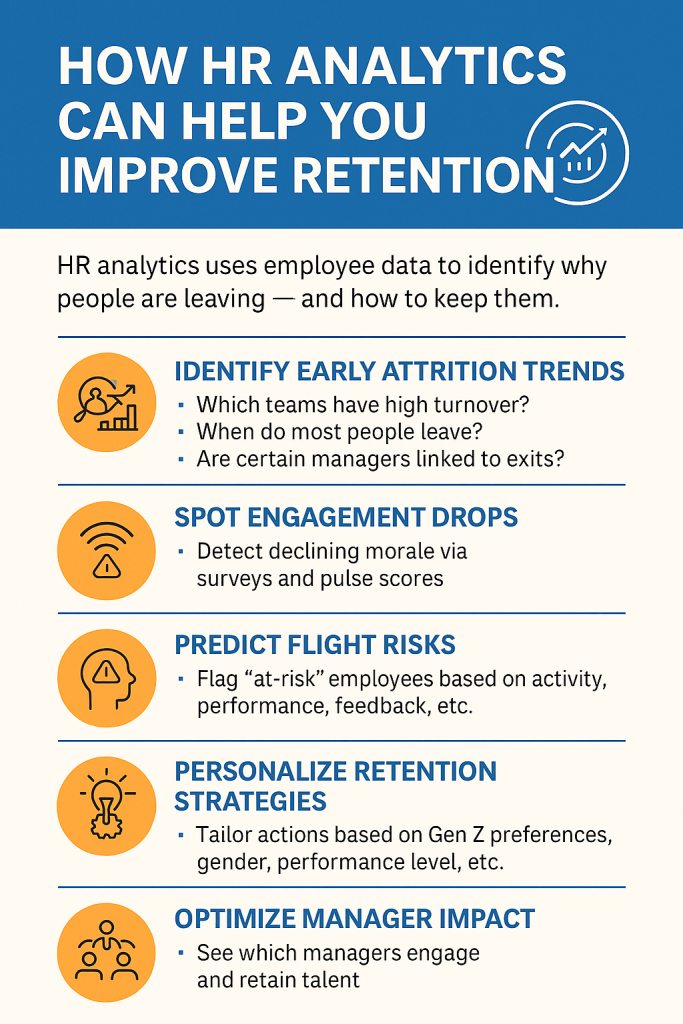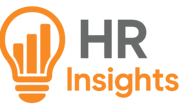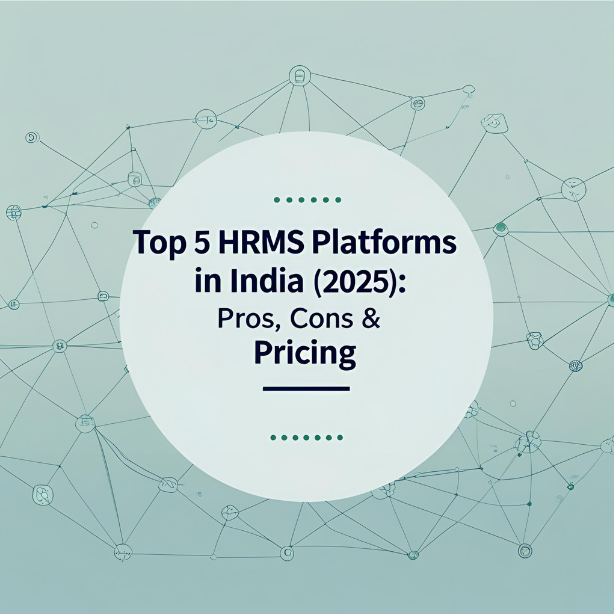
📍 Introduction
Retaining top talent has become one of HR’s toughest challenges today — especially in a world shaped by remote work, Gen Z’s evolving expectations, and fierce competition for skilled professionals. But what if you could actually anticipate — and even prevent — employee turnover?
That’s the promise of HR Analytics. It’s more than just graphs and data dashboards — it’s a strategic tool that helps HR leaders reduce attrition, cut down hiring costs, and boost overall team performance.
📊 What is HR Analytics (Plain and Simple)?
HR analytics, also known as people analytics, is the process of using data to spot patterns in employee behavior and trends — so HR decisions are driven by real insights instead of assumptions.
By combining data from sources like attendance, engagement scores, feedback, and performance reviews — and analyzing it through tools like Excel, Power BI, or HRMS dashboards — organizations can get a clearer view of what’s driving attrition and what to do about it.
🔍 5 Ways HR Analytics Boosts Retention
1. Detect Early Turnover Signals
Data reveals key trends such as:
- Which departments or job roles are seeing the most exits?
- Are employees leaving within the first 90 days or around the 1-year mark?
- Are certain managers or locations showing higher churn?
2. Catch Engagement Dips Early
Declining participation in tools like surveys (e.g., eNPS) or reduced activity in digital platforms can signal disengagement — often before an employee decides to leave.
3. Forecast Who Might Leave
Modern HR tools offer predictive analytics to highlight flight risks based on:
- Decreased activity or login behavior
- Lower performance ratings
- Missed check-ins or feedback gaps
4. Tailor Retention Efforts
Analytics lets you personalize your approach:
- Gen Z employees demanding flexibility? Launch hybrid or remote roles.
- Maternity returnees exiting? Offer phased reintegration programs.
- High performers eyeing the exit? Introduce career paths or retention perks.
5. Empower Better Managers
Data shows which leaders inspire loyalty — and which may need training. By connecting turnover to manager impact, HR can drive targeted improvements.
🧠 Case Study Snapshot
An IT mid-sized company discovered that 60% of its resignations came from one division. HR analytics traced it back to poor onboarding and team overload. After redesigning onboarding flows and setting clear KPIs for managers, attrition in that unit dropped by 28% within 3 months.
🚀 Start Small — No Big Budget Needed
You don’t need expensive platforms to begin.
- Track turnover using Google Sheets or Excel
- Explore free HR tools like Zoho People, Keka, or Freshteam
- Learn Power BI or Google Data Studio to build simple, visual dashboards
📌 Wrapping Up
Employee retention isn’t just about conducting exit interviews anymore — it’s about getting ahead of the problem with meaningful insights.
With HR analytics, you stop guessing and start acting on real, actionable data.
Now is the perfect time to turn your data into strategy.
📢 Want more practical HR tech tips?
Follow HRTechInsight for straight-to-the-point guidance on how tech makes HR smarter, sharper, and more human.


